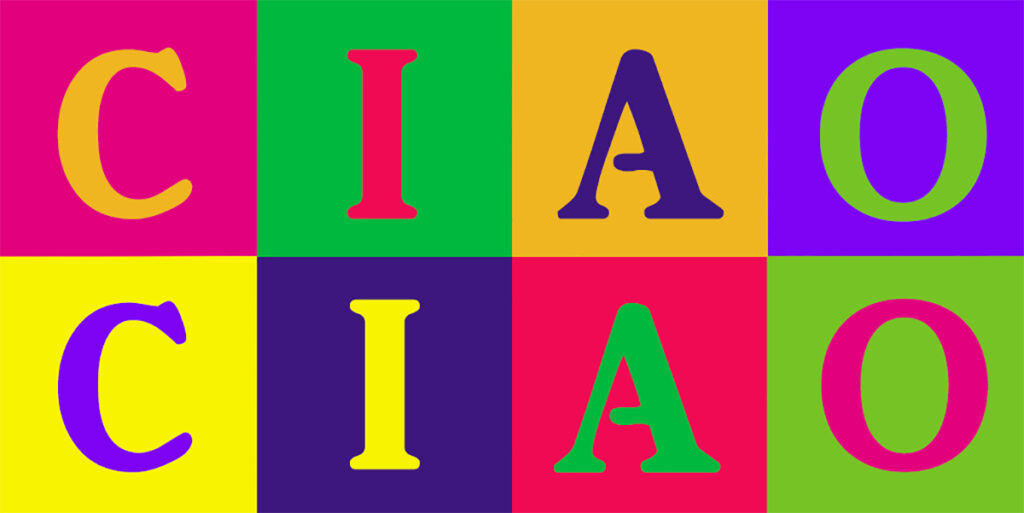“Ciao” is the most used Italian word in the world and still today it is a symbol of “made in Italy”. The word “ciao” is a form of friendly and informal greeting of the Italian language, used both in meeting and in saying goodbye.
This greeting entered the Italian language only during the twentieth century. The origin of the word has nothing to do with confidence. “Ciao” derives from the Venetian word “s’ciao“, a syncopated form of “s’ciavo” which in turn derives from the late Latin word “sclavus“, meaning “slave“. In ancient times the habit of greeting someone by declaring himself his slave was introduced. The Latin greeting formula “servus” was used as a sign of respect indicating the willingness towards a superior. Over time the Latin greeting “servus“, currently widespread in Central Europe, has mixed with the Venetian dialect becoming “s’ciavo“.
In the 18th century, however, it was an absolutely reverential greeting. In Carlo Goldoni’s comedies, it was pronounced with superiority by haughty arrogant nobles and cicisbei (servant knights). For example, in Goldoni’s masterpiece “La locandiera” (The Mistress of the Inn) the Knight of Ripafratta greeted the bystanders with «Amici, s’ciavo vostro» (Friends, I am your slave). So did Don Roberto in the comedy “La dama prudente” (The Prudent Lady).
Despite this, starting from the nineteenth century it spread as an informal greeting, being altered in its current form “ciao”. In the same period, it then began to penetrate into the Italian language, being mentioned in the “Dictionary of the Italian Language” by Niccolò Tommaseo.
In the following century it spread so in the whole Peninsula. Over the years, however, the word “ciao” has become established throughout the world as a result of the migration of Italians and has also entered as an informal greeting in the lexicon of many other languages.






